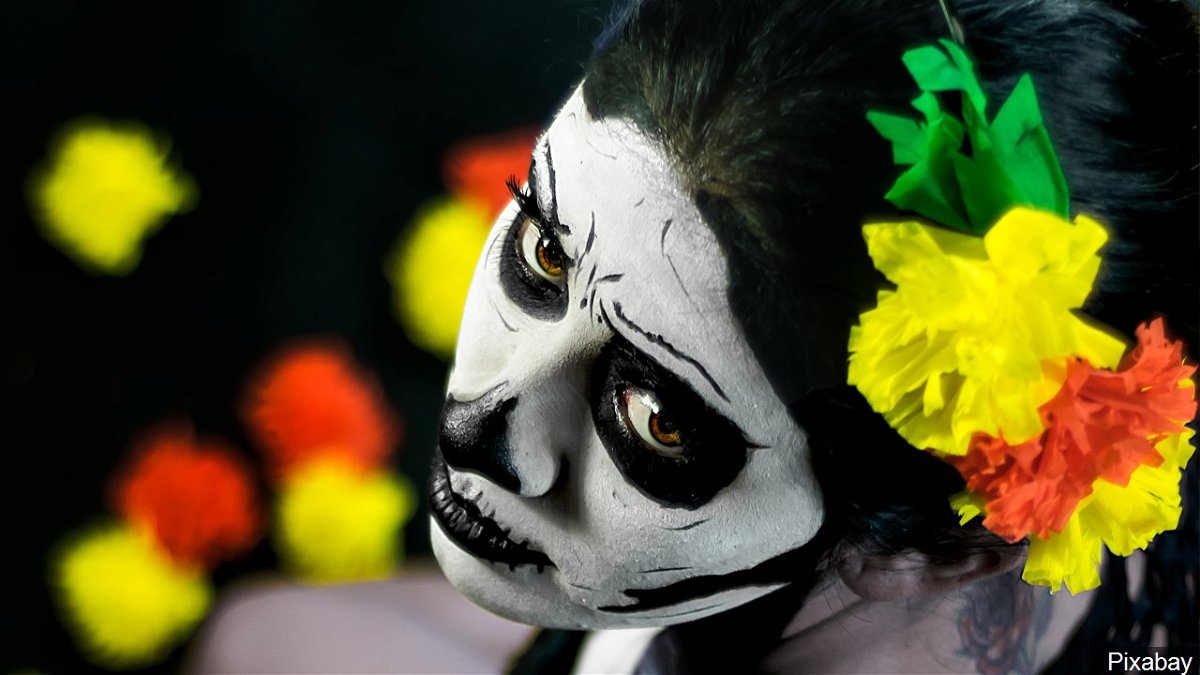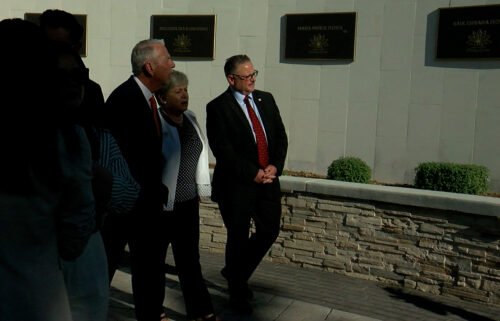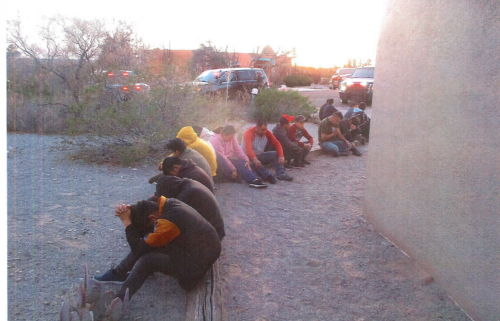Día de los Muertos allows grieving Latino community to heal from pandemic losses

The strong scent of marigolds fills the air as Magaly Saenz leans over photos of loved ones to place a special bread offering on the altar in her bakery.
The sweet pan de muerto bread is one of many offerings that Saenz places on her community altar every year, but the pandemic has brought a new meaning to the sacred experience.
“It’s very easy to get lost in that sorrow and grief,” Saenz said. “This will be an opportunity for us to find some healing.”
Saenz is co-owner of Tres Leches Café in Phoenix. She bakes pan de muerto for Día de los Muertos, known in English as Day of the Dead, to sell in addition to having a community altar at her shop. The ofrenda, which translates to offering, is a place where people can place photos of loved ones who have died along with offerings for them.
Día de los Muertos is a Mexican holiday to honor the dead on November 1 and 2. Unlike the spookiness of Halloween, this holiday is full of life and celebration.
With over 1,181,000 coronavirus fatalities and counting worldwide, people in 2020 are no strangers to death. This pandemic is hitting Latin American countries harder than average. Countries such as Ecuador and Mexico currently rank in the top 10 of the highest coronavirus death rate, both of which are higher than the United States.
Mexican President Andrés Manuel López Obrador issued a decree last Thursday declaring three days of national mourning during Día de los Muertos celebrations.
Unlike most community events, which have been scaled down or canceled this year, Saenz is making her ofrenda bigger than years past.
“We know a lot of … our community have lost a loved one due to Covid,” Saenz said. “We want to be able to build an ofrenda large enough so that everyone can come and honor their loved ones and maintain their memory.”
She’s cautious about safety at the bakery during the pandemic, but said that the ofrenda was suited for social distancing even before coronavirus swept across the country. It’s disrespectful to move someone else’s offering, which helps with keeping it clean. New this year, participants will be required to social distance and wear face masks.
While Saenz is grateful to celebrate Day of the Dead with her community, this was not the celebration she had in mind. She is a first-generation Mexican American, and her family comes from Chihuahua, Mexico. She planned to take her eight children ages 18, 17, 12, 10, 9, 5, 1 and 4 months old to the cemetery in Cruces, Chihuahua, for the first time to experience the celebrations.
Saenz also planned to take her grandmother, who is turning 93 this year, to Mexico. But Saenz found out last week the cemetery where her grandfather and other relatives are buried was closing to prevent people from gathering.
“I remember her saying just last week, ‘This might be the last year I get to go,'” Saenz said. “She’s not going to be able to take flowers to my grandfather, my aunt, and it’s rough.”
Flowers are an important part of the celebration, specifically marigolds, museum arts consultant Evelyn Orantes said.
Orantes is originally from Guatemala but is now based in Oakland, California, with her husband Joaquin Newman. They assist museums and local organizations with Día de los Muertos celebrations.
This year, Orantes and Newman will be leading a virtual paper marigold workshop at the National Museum of the American Indian in Washington, DC. The pandemic forced them to transition the event online, but Orantes is excited for the opportunity to celebrate with more people.
“My family, friends or my community couldn’t necessarily all go to Washington, DC, to witness what we do there,” Orantes said. “But now, we get to share our traditions and our stories and our work with a really broad audience.”
Marigolds have a pungent scent, which guides the souls to the altar, according to Orantes. Newman helps in making their family ofrenda and focuses on the light each family member brought into their lives.
“We have to find ways to celebrate life and to be able to not think of death as this inescapable evil,” Newman said.
Their ofrenda this year will be honoring deceased family members, including Orantes’ grandfather. He was a baker, so she made sure to include plenty of baked goods. Across the country, people also adapt their ofrenda offerings to their cultural and familial backgrounds.
“I think a lot of people think of native peoples as being stuck in the past,” Orantes said. “We’re contemporary, and our traditions evolve with us.”
In Oakland, she sees some of her Asian community members placing a Buddha statue or dim sum on their altars. And the trend extends beyond California. In San Antonio, filmmaker Jim Mendiola sees ofrendas with beer cans and cowboy boots.
Mendiola was hired to create a virtual celebration video for the Día de los Muertos at Hemisfair, one of the largest festivals marking the holiday in the United States. Nearly 100,000 people attended the celebration last year.
The centerpiece of this event is the community altar, which is a towering ofrenda reaching 11 feet into the air, filled with photos, flowers and more. Mendiola described the festival as a strange mixture of celebration and sadness.
“In the midst of all the festivities, it wasn’t unusual to see someone standing there looking at the altar and finding their father or brother or their sister and crying, having an emotional moment,” Mendiola said.
The community altar is scaled down this year, but unlike the main virtual celebrations, it’s still in person. The festival also has a virtual altar, and anyone from around the globe can submit photos of loved ones.
In addition, organizers of the festival selected a handful of families who have attended the festival over the years to design their own in-person ofrendas. Mendiola videotaped the event and saw ofrendas honoring a variety of people, from the late Supreme Court Justice Ruth Bader Ginsburg to someone’s uncle who passed away from the coronavirus.
Another essential part of Día de los Muertos celebrations are the music performances, Mendiola said. The pandemic allowed the festival to curate a star-studded lineup, including Chris Perez, who was married to Grammy Award-winning Mexican American singer Selena Quintanilla Perez. The Selena Tribute is honoring the 25th anniversary of her death.
Many of the artists featured would not have been able to travel to San Antonio for the festival, but virtual performances made musicians more accessible.
Accessibility is a common theme across all the Día de los Muertos celebrations this year. People would normally only be exposed to specific types of celebrations in their community, but now they can virtually join hundreds of online events.
Saenz believes this presents a great learning moment for her children and the greater public to learn more than if they had gone to a single event. The virtual nature of most celebrations also serves as a reminder that there is a pandemic and that people need to keep each other safe, she said.
It’s also an opportunity for her to reach out to those mourning the loss of loved ones — specifically due to Covid-19 — while teaching them about her heritage.
“Especially right now, even people that wouldn’t normally celebrate Día de los Muertos, they might find some comfort in setting up an altar in their home and celebrating with loved ones,” Saenz said.




